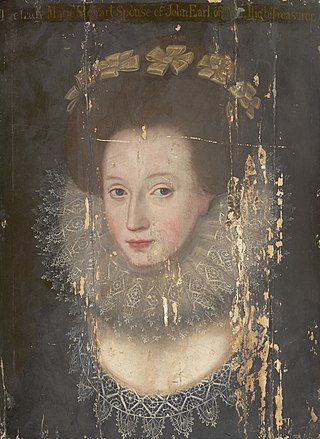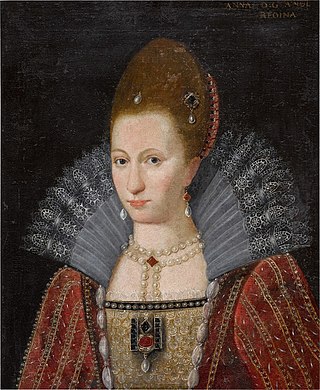Career
She was a daughter of Robert Gibb of Carriber and Elizabeth Schaw. [1]
On 4 February 1577 she married Peter Young of Seaton, a tutor to James VI at Stirling Castle. [2] In early modern Scotland married women did not usually adopt their husband's surnames. [3] [4] A datestone from their long demolished house at Seaton, Forfarshire, was carved with their initials, "1583 PY EG." [5]

James VI gave her a psalter, which he had received from Thomas Hay, Commendator of Glenluce. [6]
She was invited to wait on Anne of Denmark at her coronation in May 1590. [7] She joined the queen's household. Her brother John Gibb was a servant of James VI and keeper of Dunfermline Palace.
Like the courtier Katherine Bellenden, who served James V and made his shirts, Elizabeth Gibb sewed and worked fabrics for the king and the queen, especially linen items. Several are mentioned in the royal treasurer's accounts, including "sarks" (shirts) with "necks" (collars) and bands, ruffs, and "hands" (cuffs). She also sewed taffeta and ribbons to dress Anna of Denmark's hair, and made linen caps called "mutches." She embroidered some of these items with gold and silver thread. [8]
More head coverings and veils for the queen made by Gibb, known as "taffetas", with hats and black satin veils for riding wear were recorded in an account made by the textile merchant and financier Robert Jousie. [9] In July 1590 she made three matching crimson velvet hats, for Anna of Denmark, and her two Danish maidens of honour Sofie Koss and Katrine Skinkel. [10] Elizabeth Gibb made snoods and took delivery of a gold "kell" and two silver "kells" for the queen, which were a kind of hair net, and costly at £16 Scots. She made the queen "mussellis and tournets and rydding geir" from black satin, these were masks and face veils to protect her complexion. [11]
Grissel Hamilton was the queen's "Mistress Sewstar", the Mistress of Sewing in the household. From time to time Anna herself was provided with thread to weave, the accounts record, "fine black silk for your Majestie to vewe with." [12]
Elizabeth Gibb died on 10 May 1595 in Leith. [13] Some sources say she died in 1593. [14]









